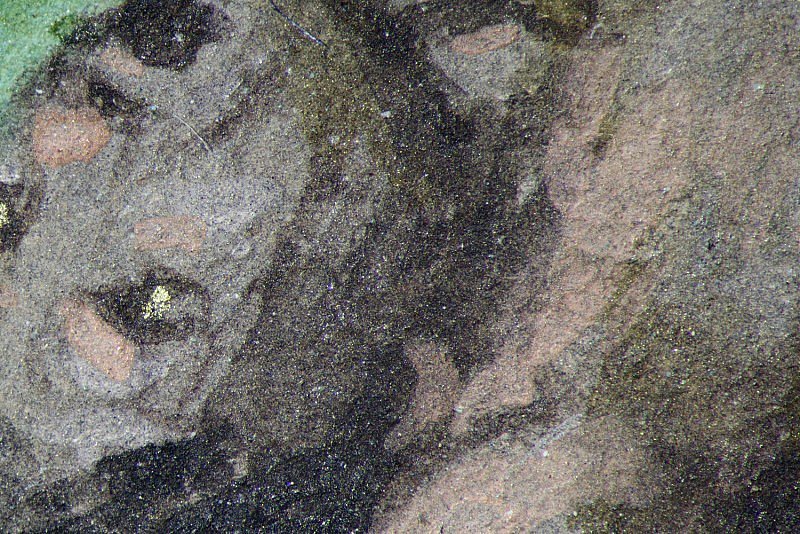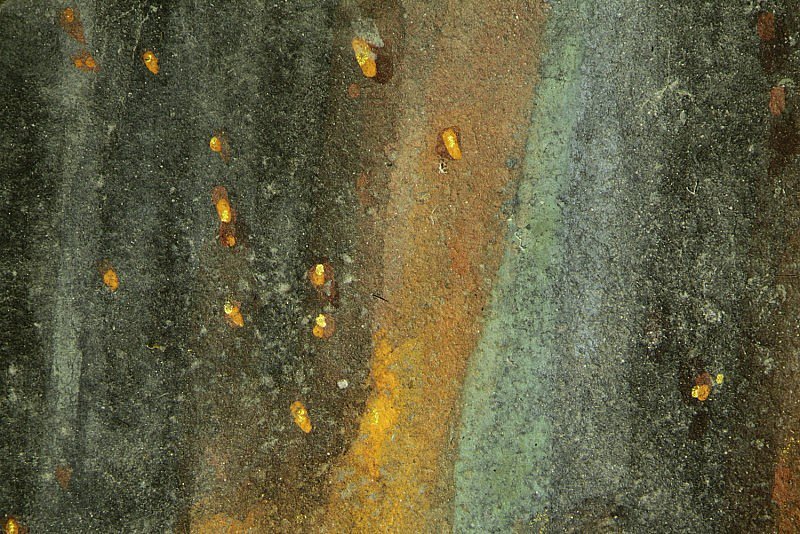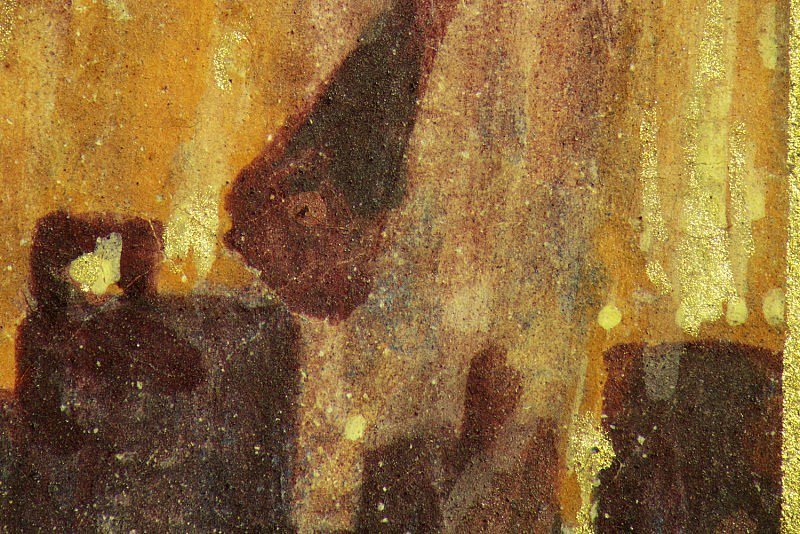Light effects
Artists' Techniques
Bening used shell gold and carefully blended or juxtaposed colours to simulate atmospheric effects and to recreate the impact of light on different materials and textures. He followed contemporary conventions in depicting a consistent light source illuminating all scenes and frames from the top left, and employed aerial perspective to create a sense of depth and to distinguish between picture planes (e.g. MSS 294a, 294c). Bening also explored the impact of additional light sources – divine, man-made or infernal. He used shell gold of varying density for the rays of the Holy Spirit emanating from the dove in the Annunciation miniature (MS 294b). He painted realistic flames in the fireplace that warms the newborn Mary (MS 294c). He reserved the most dramatic treatment and the most complex combination of pigments for the fire and smoke of Hell (MS 294d).



Last Judgement
On a bright, green hillside, Saint Peter welcomes the Saved into Paradise, while the Damned, writhing in a pit of darkness, are consigned to Hell (hotspot 1). A most sophisticated palette was employed for the depiction of Hell. The central part of the miniature combines red lead, indigo, azurite, lead white, most likely a mineral copper green, and probably carbon black, lead-tin yellow and yellow ochre, accentuated with sparks of shell gold (hotspot 2). The flames in the side borders also contain an organic red yielding a deep pink colour, while lead-tin yellow provides the bright flashes of demonic, infernal light (hotspot 3). The Damned are represented as melancholics - their dark, grey-brown skin burnt by the fires of Hell contrasts with the flesh of the Saved who are painted in naturalistic tints. In the lower border, an energetic troop of angels, clad in white and wielding swords, prevents the Damned, including high-ranking ecclesiastics, from escaping their fate. These figures derive from Albrecht Dürer’s Apocalypse-inspired woodcut, The Massacre by the Four Angels, made c. 1498.